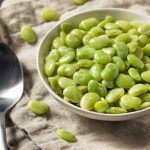 Technology
Technology  Technology
Technology  Humans
Humans 10 Everyday Human Behaviors That Are Actually Survival Instincts
 Animals
Animals 10 Animals That Humiliated and Harmed Historical Leaders
 History
History 10 Most Influential Protests in Modern History
 Creepy
Creepy 10 More Representations of Death from Myth, Legend, and Folktale
 Technology
Technology 10 Scientific Breakthroughs of 2025 That’ll Change Everything
 Our World
Our World 10 Ways Icelandic Culture Makes Other Countries Look Boring
 Misconceptions
Misconceptions 10 Common Misconceptions About the Victorian Era
 Mysteries
Mysteries 10 Strange Unexplained Mysteries of 2025
 Miscellaneous
Miscellaneous 10 of History’s Most Bell-Ringing Finishing Moves
 Technology
Technology Top 10 Everyday Tech Buzzwords That Hide a Darker Past
 Humans
Humans 10 Everyday Human Behaviors That Are Actually Survival Instincts
 Animals
Animals 10 Animals That Humiliated and Harmed Historical Leaders
Who's Behind Listverse?

Jamie Frater
Head Editor
Jamie founded Listverse due to an insatiable desire to share fascinating, obscure, and bizarre facts. He has been a guest speaker on numerous national radio and television stations and is a five time published author.
More About Us History
History 10 Most Influential Protests in Modern History
 Creepy
Creepy 10 More Representations of Death from Myth, Legend, and Folktale
 Technology
Technology 10 Scientific Breakthroughs of 2025 That’ll Change Everything
 Our World
Our World 10 Ways Icelandic Culture Makes Other Countries Look Boring
 Misconceptions
Misconceptions 10 Common Misconceptions About the Victorian Era
 Mysteries
Mysteries 10 Strange Unexplained Mysteries of 2025
 Miscellaneous
Miscellaneous 10 of History’s Most Bell-Ringing Finishing Moves
10 Everyday Foods You Didn’t Know Were Invented by the U.S. Military
The old military adage, “An army marches on its stomach,” has been a guiding principle for the U.S. armed forces for centuries. However, the mission to feed troops well—and, crucially, to feed them imperishable and easily transportable rations—has resulted in far more than just MREs. Since World War I, the military, through the Quartermaster Corps and specialized research laboratories, has partnered extensively with academic institutions and major food corporations to fund, develop, and perfect revolutionary food science technologies.
This government-sponsored research has led to breakthroughs in everything from moisture control and dehydration techniques to vacuum-sealing and meat restructuring. Because the military is legally mandated to share its successful food science with the consumer sector—a key element of national readiness—many of these innovations left the battlefield and ended up directly on grocery store shelves. These ten popular foods and food technologies owe their existence, or their widespread availability, to the U.S. military’s mission to create the perfect, indestructible combat ration.
Related: 10 Inventions Meant for the Military They Never Used
10 Instant Coffee
The initial demand for instant, portable coffee began well before modern warfare, but the U.S. military was the primary driver of its mass commercial success. During the Spanish-American War in 1898, the U.S. government commissioned scientists to develop a convenient coffee concentrate that soldiers could easily prepare in the field, leading to early, though often poor-tasting, experiments with dehydrated coffee extract.
However, the real breakthrough and mass production arrived during World War I, when the military ordered a vast supply of what was nicknamed “Red Cross coffee” or “coffee cubes.” The primary supplier was the G. Washington Coffee Company, founded by chemist George C. Washington. By 1918, each soldier received roughly 1.5 ounces of soluble coffee daily, making instant coffee one of the most valued trench comforts.
After WWI, Washington heavily marketed his instant coffee to the American public, but it was World War II that truly cemented instant coffee as a supermarket staple. The U.S. military purchased the entire output of major suppliers, including Nestlé, which had developed the better-tasting Nescafé in 1938. When soldiers returned home accustomed to the convenience of instant coffee, the civilian market exploded, transitioning the wartime necessity into a permanent consumer fixture.[1]
9 Frozen Orange Juice Concentrate
The initial military problem that led to this household staple was ensuring soldiers received adequate Vitamin C, especially in tropical combat zones where fresh fruit was scarce or spoiled quickly. During World War II, the U.S. Army actively sought a contractor who could create a preserved, compact, and palatable orange juice concentrate to prevent scurvy and other vitamin deficiencies among troops deployed overseas.
The solution came from a team of USDA scientists who perfected a process for vacuum concentration and freezing that retained the juice’s flavor and nutrient content far better than previous drying methods. Much of this work took place at the USDA’s Winter Haven laboratory. In 1945, Florida Foods Corp. secured the manufacturing contract and began preparing a massive half-million-pound order of frozen concentrate for the Army.
While the war ended before the massive order could be fully shipped to troops, the technology had been perfected under military contract. Florida Foods Corp. quickly rebranded itself as Vacuum Foods Corp., and later as Minute Maid. Leveraging the military-developed science—and a commercial campaign featuring Bing Crosby—the new frozen orange juice concentrate became one of the first major frozen-aisle staples in American supermarkets.[2]
8 Stale-Resistant Bread
For centuries, bread on the battlefield was a logistical nightmare; it was bulky and went stale within days, forcing soldiers to rely on notoriously hard hardtack crackers. While improved active dry yeast developed during WWII helped local garrisons bake better bread, the need for a truly shelf-stable, soft loaf that could be shipped in bulk remained a priority for the Quartermaster Corps.
In the 1950s, the military contracted the Department of Grain Science and Industry at Kansas State College (now Kansas State University) to scientifically break the barriers of bread staling. The researchers focused on utilizing specific fatty acids and bacterial enzymes to interfere with the crystallization of starch molecules that cause bread to harden over time.
The scientists successfully engineered a bread that remained softer and shelf-stable for weeks rather than days, finally making fresh-tasting bread a consistent ration for soldiers in the field. This process became the basis for the extended-shelf-life loaves used by fast-food chains and the soft supermarket sandwich bread still found nationwide.[3]
7 Shelf-Stable, Restructured Meat Products (The McRib)
Meat is historically the most expensive and heaviest food item for the military to transport. By the 1960s, the U.S. Army sought a cost-effective solution to provide palatable protein that was uniform in shape and texture, especially for mass-produced rations. Army scientists at the Natick Soldier Research, Development and Engineering Center were tasked with developing a method for “fabricated beefsteak”—restructured meat that could be shaped and frozen efficiently.
The scientists developed a process of grinding lower-cost cuts of meat, adding binders and flavorings, and then pressing the mixture into a uniform shape that could be easily frozen, shipped, and cooked. University of Nebraska food technologist Dr. Roger Mandigo later expanded this technique, which became the backbone of restructured meat technology.
This military-developed process was quickly observed and adapted by the civilian food industry. In 1981, McDonald’s famously used this exact science to launch two of its most iconic products: the Chicken McNugget and the McRib sandwich. The McRib, in particular, relies entirely on the technique of homogenizing and restructuring pork to form the trademark rib-like shape.[4]
6 Energy Bars (The Apricot Bar)
The concept of the emergency fortified food bar originated with the military in the late 1930s when the U.S. Army partnered with the Hershey Co. to create the Logan D ration. Although these early chocolate bars were incredibly calorie-dense and fortified, they were notoriously bitter and tasted awful—a feature deliberately included to deter troops from eating them outside of actual emergencies.
Recognizing the need for a more palatable, highly nutritious, and non-melting fortified bar, the Army stepped up its research in the 1960s, collaborating closely with scientists involved in the NASA space program. The key breakthrough came from developing advanced moisture-control technology to stabilize the ingredients. This technology led to the creation of a high-calorie, moisture-controlled apricot bar used in the Apollo missions, including by astronaut David Scott on Apollo 15 as part of in-flight food tests.
The technology was quickly licensed to the consumer sector. Pillsbury helped launch the first commercial versions, including Space Food Sticks, in 1970. By the mid-1970s, this same military-developed science led directly to the modern energy and granola bar market.[5]
5 Freeze-Drying Technology
While freeze-drying was a known scientific process prior to the 1940s, its perfection and large-scale industrialization were entirely funded and driven by the U.S. military during World War II. The primary problem was logistics: military planners needed a way to supply lightweight, non-perishable blood plasma, medicines, and penicillin to soldiers in the field without refrigeration. MIT researchers played a major role in refining the process.
The government poured significant resources into perfecting the lyophilization process, which involves freezing a product and then reducing the surrounding pressure to allow the frozen water to sublimate directly into vapor. This preserves structure, flavor, and nutrients far better than traditional dehydration, and the resulting food or medicine weighs dramatically less.
After successfully applying the technology to everything from medical supplies to rations, the science was widely disseminated to the private sector. It now forms the backbone of several major food industries, from backpacking meals to instant coffee. And perhaps the most famous—and unexpected—consumer novelty to come from this research is astronaut ice cream.[6]
4 Modified Atmosphere Packaging (Salad Kits)
The technology behind pre-packaged foods that stay fresh for extended periods originated in the U.S. Navy’s quest in the 1950s to reduce food spoilage on long voyages and remote bases. The goal was to maintain the freshness and nutrient density of fruits and vegetables without relying on heavy or unreliable refrigeration.
The Navy was an early leader in using controlled atmospheres for food storage, particularly using polyethylene bags and containers where oxygen, nitrogen, and carbon dioxide levels were carefully balanced to delay ripening. The Army’s Quartermaster Corps later expanded this on a massive scale during the Vietnam War, contracting with Whirlpool to create modified-atmosphere containers for shipping leafy greens.
This partnership led directly to the consumer application of the 1980s: the ready-to-eat salad kit. The sophisticated, multilayer packaging used today to keep bagged salads fresh is a direct descendant of this military-funded technology.[7]
3 Dehydrated Cheese Powder (Cheetos and Mac & Cheese)
The U.S. military’s obsession with portable, non-perishable cheese peaked during World War II when the Quartermaster Corps purchased over 100 million pounds of cheese. Facing the necessity of cutting weight and volume for combat rations, the military heavily funded research into rapid dehydration techniques for dairy products.
The key breakthrough came in 1943 from USDA scientist George Sanders, who created the first successful dehydrated cheese powder by drying, grinding, and blending cheeses into a shelf-stable powder. Kraft had already introduced boxed macaroni and cheese in 1937 using similar powdered cheese, but the military’s huge demand refined and mass-scaled the process.
When WWII concluded, food manufacturers were left with both the technology and surplus cheese powder. In 1948, the Frito Company used it to coat its new cornmeal puffs—what became Cheetos. This same military-developed powder remains the base for cheese snacks, Goldfish crackers, and boxed macaroni and cheese today.[8]
2 The “Tropical” Chocolate Bar (The Non-Melting Ration)
Before M&M’s were a concept, the U.S. Army faced a simple but critical problem: standard chocolate melted quickly in warm climates. In the late 1930s, the Army commissioned the Hershey Company to create the “D ration,” a non-melting, highly fortified chocolate bar that tasted bad enough to ensure it was eaten only in emergencies.
However, the “D ration” was too bitter. In 1943, the Army requested a better-tasting, non-melting version for troops worldwide. Hershey responded by developing the Tropical Chocolate Bar, which could withstand temperatures up to 120°F (49°C) without melting. Between 1941 and 1944, nearly a quarter of a billion of these bars were shipped overseas.
The technology behind stabilizing high-fat chocolate without refrigeration was a breakthrough in food science. Hershey perfected it under military direction, and the research contributed to later non-melting coatings and snack-bar formulations.[9]
1 Potato Flakes (Instant Mashed Potatoes)
Instant mashed potatoes are one of the most successful direct consumer spin-offs of a focused military logistical problem during World War II and the Korean War. The challenge for the Quartermaster Corps was minimizing the bulk and spoilage risk of potatoes while providing a reliable, hot, and nutritious starch component for field rations.
The military funded extensive research by the USDA’s Eastern Regional Research Center to find the perfect dehydration method. The ERRC perfected the “flaking” process—cooking, mashing, cooling, and dehydrating potatoes into thin sheets. Scientists Dr. Edward A. Fisher and Dr. George W. Wagner patented this process in 1953, and the flakes retained the taste and texture of real potatoes when rehydrated.
In the 1950s, the technology was licensed to the private sector and soon appeared on grocery shelves, marketed by companies like Pillsbury and Idahoan. Instant mashed potatoes became a cheap, convenient, and permanent fixture in the American diet thanks entirely to the military’s need for lightweight, non-perishable starch.[10]








